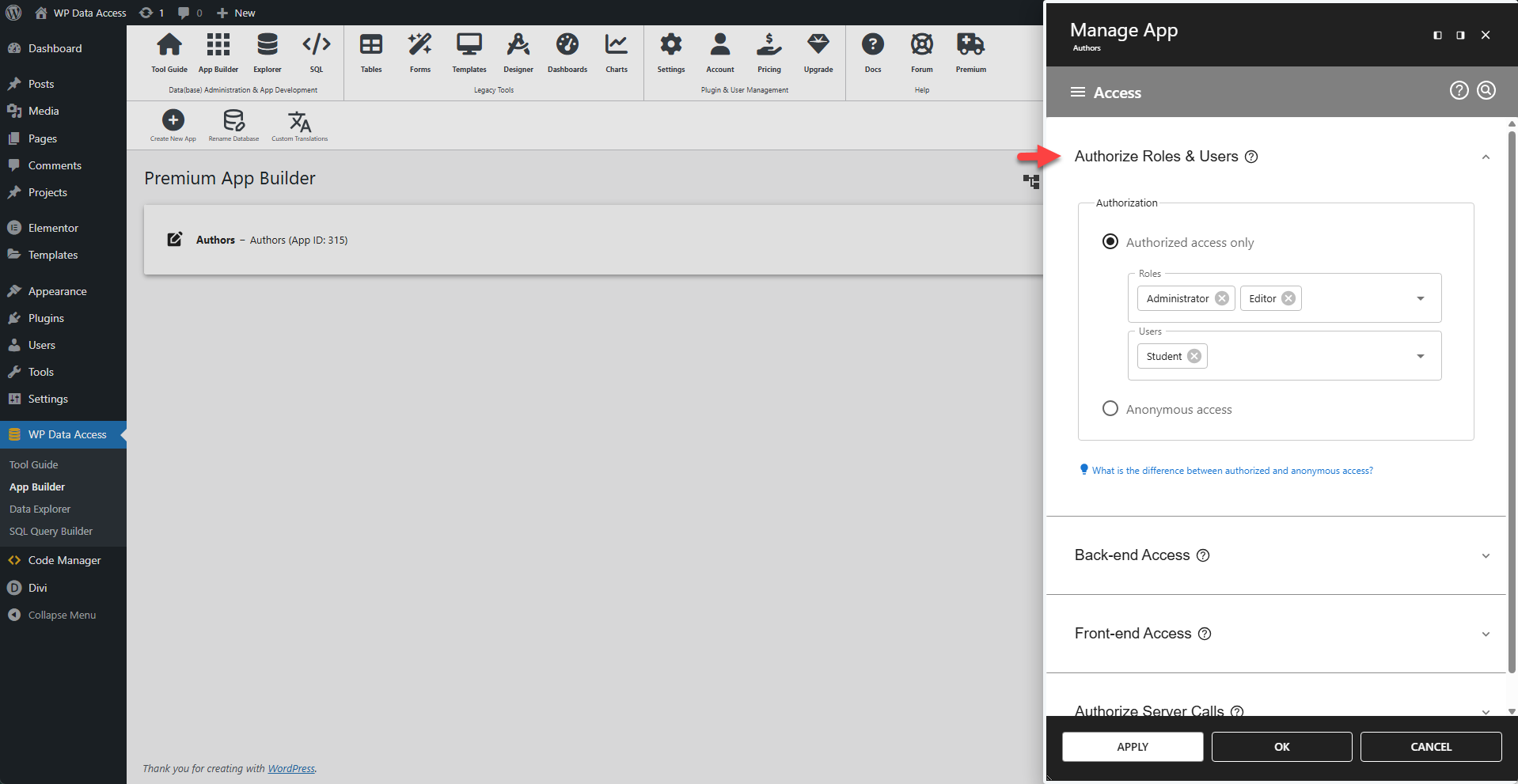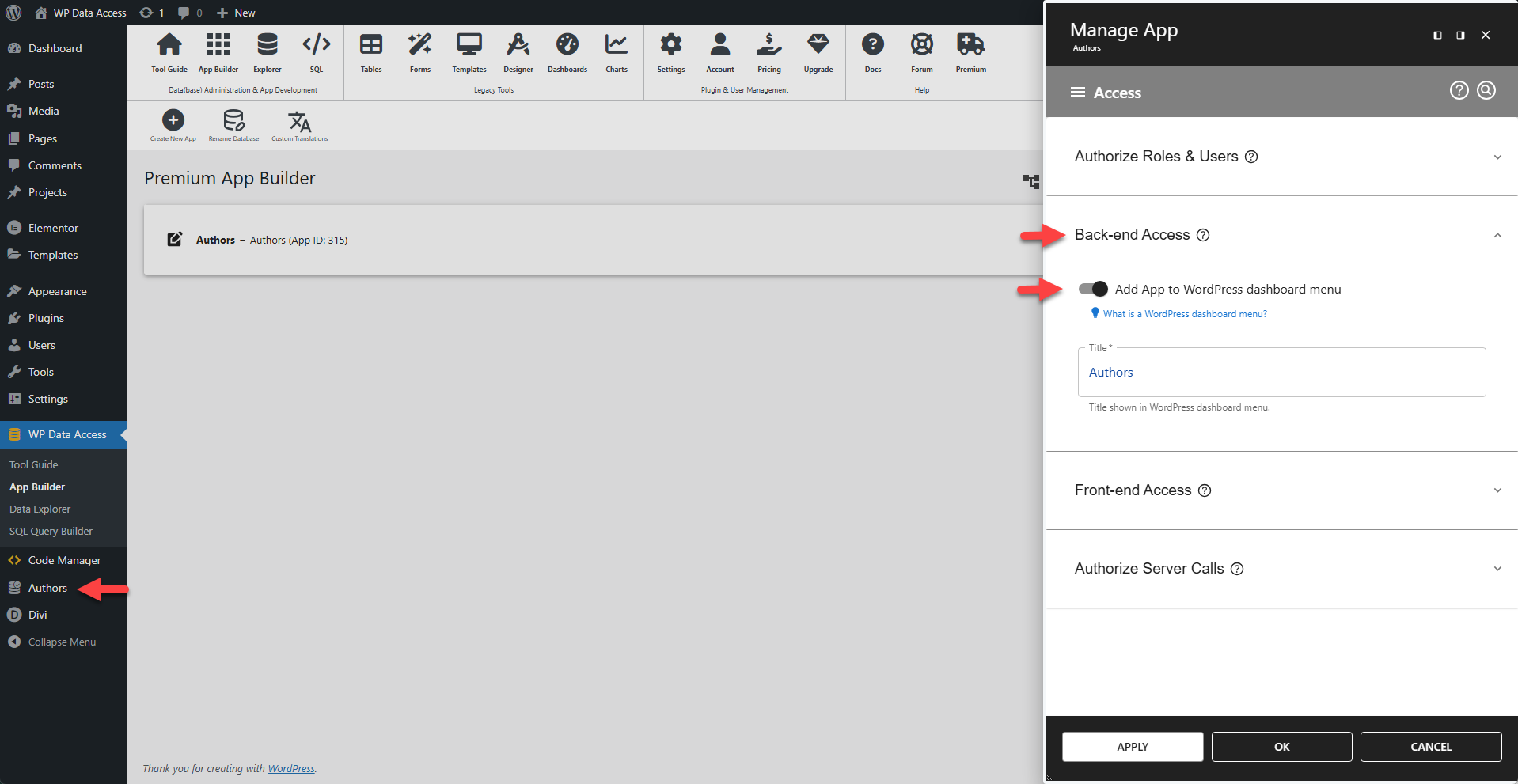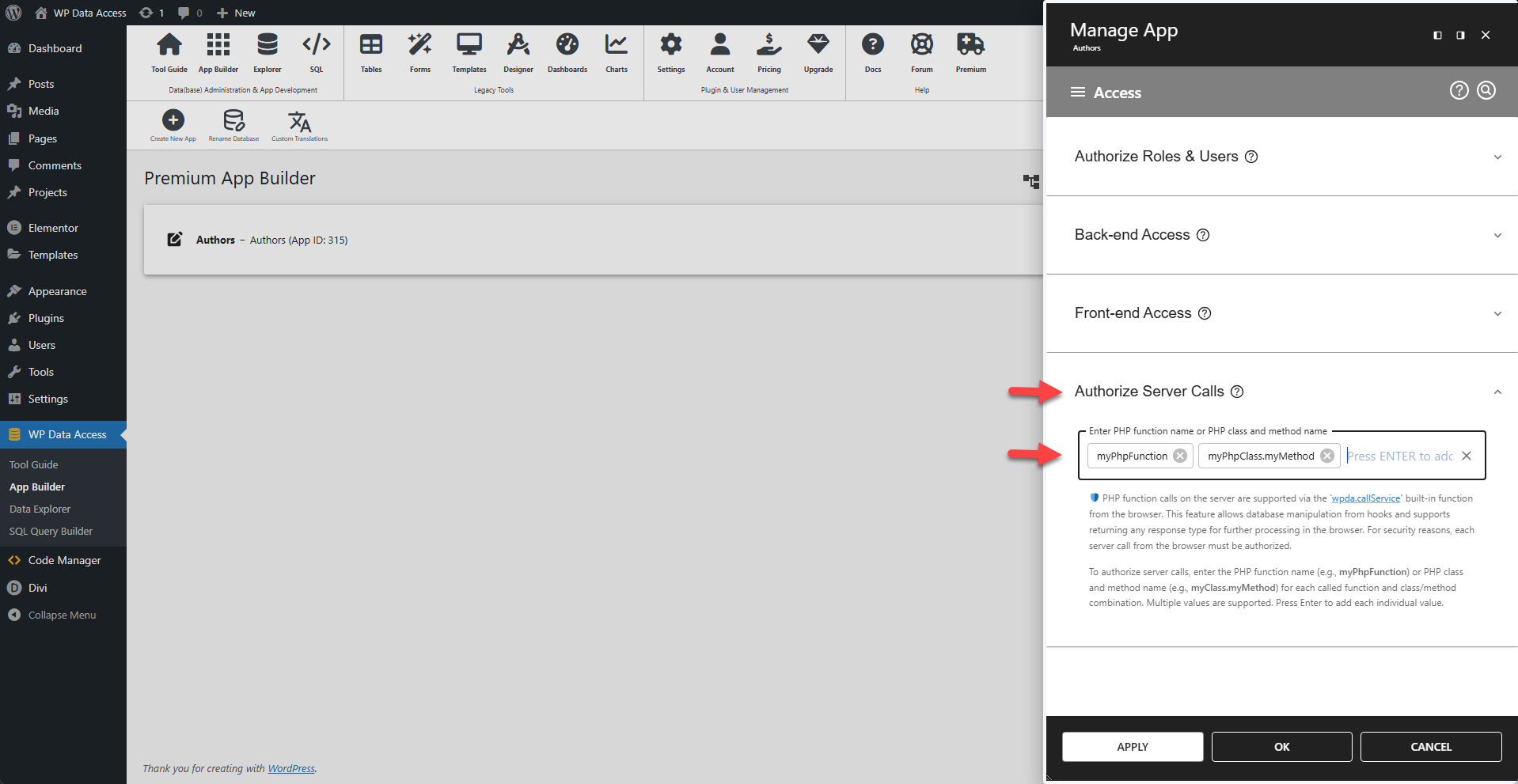Appearance
App Manager - Access
The Access section controls app permissions and usage settings.
Authorize Roles & Users

Configure which users are allowed to use the app.
🌐 Access Scope
- Applies to both back-end and front-end:
- Back-end: Restricted to registered users only.
- Front-end:
- 📋 Data Table Apps: Typically allow anonymous access (public viewing).
- 📝 Data Administration Apps: Usually require authorization to prevent unauthorized edits.
🔒 Authorized Access Only
- Who can access?
- Logged-in users with specified roles.
- Explicitly selected users.
🌍 Anonymous Access
- Who can access?
- All users (logged-in and logged-out).
Back-end Access

Allows authorized users to access the app directly from their WordPress dashboard.
When enabled, the app appears on the authorized users' dashboards with the specified title. A corresponding front-end menu item will also be created, as shown in the screenshot.
💡 Administrators have full access to all apps by default. However, to display an app on an administrator's dashboard, you must explicitly authorize their role or username.
Front-end Access

Embeds the app on any page using a shortcode.
Copy the generated shortcode and paste it into your desired page. Additional features can be enabled as explained below.
💬 Feedback
Displays authorization and error messages.
🚫 Disable Builders on Front-End
Hides the builder tool icon for administrators, preventing app editing on the front-end.
Authorize Server Calls

Authorize PHP function calls on the server from client-side hooks.
🛡️ PHP function calls on the server are supported via the wpda.callService built-in function from the browser. This feature allows database manipulation and other server-side tasks from hooks and supports returning any response type for further processing in the browser. For security reasons, each server call from the browser must be authorized.
✨ Examples
To authorize server calls, enter the PHP function name (e.g., myPhpFunction) or PHP class and method name (e.g., myClass.myMethod) for each called function and class/method combination.
📌 Multiple values are supported. Press ENTER to add each individual value.
